






با طراحی سایت در Nord-Pas-de-Calais فرانسه شما در سطح اینترنت میتوانید کسب و کار سنتی خودتان را رونق دهید داشتن یک وب سایت و بهینه سازی آن ( سئو سایت ) دارای فواید بسیاری است، بسیاری از شرکتهای طراحی وب سایت وجود دارند که نه تنها کارشان گویای کیفیت کار بالای آنهاست بلکه مشاوره های قوی در زمینه تبلیغات و برندینگ و بازاریابی اینترنتی دارند که با ارائه این مشاوره ها جای هیچ گونه نگرانی برای شما باقی نمیگذارند.
شرکت سیماگر یک شرکت معتبر در زمینه طراحی سایت و سئو سایت است و آمادگی کامل خود را در زمینه توسعه کسب وکار اینترنتی داریم با توجه به این نکته که اکثر شما دوستان افراد بسیار باهوشی هستید و این رو خوب میدونید که اکثر موفقیت ها هم پشت ترس ها قرار گرفته پس ترس خود را کنار بگذارید و با یک مشاوره از دنیای وب سایت های اینترنتی کسب در آمد کنید.


Remarkable as a landscape shaped over three centuries of coal extraction from the 1700s to the 1900s, the site consists of 109 separate components over 120,000 ha.
It features mining pits (the oldest of which dates from 1850) and lift infrastructure, slag heaps (some of which cover 90 ha and exceed 140 m in height), coal transport infrastructure, railway stations, workers’ estates and mining villages including social habitat, schools, religious buildings, health and community facilities, company premises, owners and managers’ houses, town halls and more.
The site bears testimony to the quest to create model workers’ cities from the mid 19th century to the 1960s and further illustrates a significant period in the history of industrial Europe.
It documents the living conditions of workers and the solidarity to which it gave rise.
Description is available under license CC-BY-SA IGO 3.
0 Le Nord-Pas de Calais offre un paysage remarquable façonné par trois siècles (XVIIIe au XXe siècle) d’extraction du charbon.
Les 120 000 hectares du site sont constitués de 109 biens individuels qui peuvent être des fosses (la plus vieille date de 1850), des chevalements (supportant les ascenseurs), des terrils (dont certains couvrent 90 hectares et dépassent les 140 mètres de haut), des infrastructures de transport de la houille, des gares ferroviaires, des corons et des villages de mineurs comprenant des écoles, des édifices religieux, des équipements collectifs et de santé, des bureaux de compagnies minières, des logements de cadres et châteaux de dirigeants, des hôtels de ville, etc.
Le site témoigne de la recherche du modèle de la cité ouvrière, du milieu du XIXe siècle aux années 1960, et illustre une période significative de l’histoire de l’Europe industrielle.
Il informe sur les conditions de vie des mineurs et sur la solidarité ouvrière.
Description is available under license CC-BY-SA IGO 3.
0 Esta cuenca minera es notable por la forma en que la extracción del carbón ha configurado su paisaje a lo largo de unos tres siglos, desde 1700 hasta la segunda mitad el siglo XX.
El sitio abarca 120.
000 hectáreas y comprende 109 elementos diferentes: pozos de minas (el más antiguo data de 1850), montacargas y ascensores, escombreras (algunas tienen una superficie de 90 hectáreas y sobrepasan los 140 metros de altura), infraestructuras para el transporte del carbón, estaciones de ferrocarril, caseríos de obreros y pueblos mineros con viviendas sociales, residencias de propietarios y administradores, escuelas, iglesias, dispensarios, centros comunitarios, oficinas de compañías mineras, sedes municipales y otros edificios.
El sitio es una muestra de los esfuerzos realizados desde mediados del siglo XIX hasta los años sesenta del siglo XX para crear ciudades obreras modelo y, al mismo tiempo, constituye un testimonio de un periodo importante de la historia de la industria europea.
También proporciona un ejemplo de las condiciones vida de los trabajadores y de la solidaridad obrera generada por ellas.
source: UNESCO/ERI Description is available under license CC-BY-SA IGO 3.
0 source: NFUAJ Dit landschap vormde zich gedurende meer dan drie eeuwen steenkoolwinning, vanaf 1700.
Het mijnbekken bestaat uit 109 afzonderlijke onderdelen verspreid over 120.
000 hectare.
Het gebied kent mijnbouwputten (de oudste uit 1850), een liftinfrastructuur, sintelbergen (sommige van 90 hectare en meer dan 140 meter hoog), een kolenvervoerinfrastructuur en treinstations.
Er zijn ook arbeidersverblijven en mijnbouwdorpen met scholen, religieuze gebouwen, ziekenhuizen en gemeenschappelijke voorzieningen te vinden.
Het mijnbekken getuigt van de zoektocht naar het creëren van een model arbeidersstad, in de periode van midden 19e eeuw tot 1970.
Daarnaast illustreert het de leefomstandigheden van mijnwerkers en een belangrijke periode in de geschiedenis van industrieel Europa.
Source: unesco.
nl Brief synthesis The Nord-Pas de Calais Mining Basin corresponds to the French part of the northwest European coal seam.
On a broad open plain, it extends some 120 km, through the two administrative departments of Nord and Pas-de-Calais.
It presents a remarkable cultural landscape in terms of its continuity and homogeneity.
It provides an important and well preserved example of coal mining and its associated urban planning throughout the two centuries of intensive coal extraction from the end of the 18th century to the last quarter of the 20th century, through industrial methods involving a great many workers.
This succession of landscapes resulting from the virtually mono-industry of coal extraction includes: physical and geographic components (slag heaps, farmland, mining subsidence ponds and woods), a mining industrial heritage (pit heads, residual industrial buildings and headgear), vestiges of transport equipment, the so-called ’cavaliers’, (canals, railways, conveyors), worker housing and characteristic urban planning (mining villages, garden cities, detached housing estates and tenement buildings), monumental and architectural components testifying to community life (churches, schools, managers’ châteaux, company head offices, worker union premises, stations, town halls, hospitals and clinics, community halls and sports facilities), and finally places of remembrance and celebration of the Basin’s history and its miners.
Criterion (ii): The Nord-Pas de Calais Mining Basin provides exceptional testimony to the exchange of ideas and influences regarding the extraction methods used for underground coal seams, the design of worker housing and urban planning, as well as the international human migration that accompanied the industrialization of Europe.
Criterion (iv): The living and evolving mining landscapes of the Nord-Pas de Calais Basin provide an eminent example of the large-scale development of coal mining in the 19th and 20th centuries, by large industrial companies and their considerable workforce.
This is a space structured by urban planning, specific industrial structures and the physical vestiges of coal extraction (slag heaps and subsidence).
Criterion (vi): The social, technical and cultural events associated with the history of the Mining Basin had international repercussions.
They are a unique and exceptional illustration of the danger of mine-working and of the history of its major disasters (Courrières).
They are testimony to the evolution of the social and technical conditions of coal extraction.
They represent a major symbolic place of the workers’ condition and their solidarity, from the 1850s to 1990.
They are testimony to the dissemination of the ideals of worker unionism and socialism.
Integrity The diversity and the number of components that make up the property, and the many additional aspects of its landscapes express a good level of technical, territorial, architectural and urban integrity.
The integrity of the industrial testimony to coal extraction is, however, much weaker.
This unequal integrity in the material testimonies nonetheless still enables a satisfactory expression of the property’s economic and social values.
In practice, the integrity can be satisfactorily read on three levels: the technical object or building, the intermediate level of the coal extraction pit, worker estate or local territory, and, lastly, the more expansive view of the landscapes and horizons that meet the visitor’s eye.
Authenticity The property’s authenticity should be considered at the level of its 109 components and at the level of each of the associated landscapes.
Owing to a rigorous selection of these components, the conditions of authenticity are generally good.
However, they suffer from occasional gaps in the housing, that it would be a good idea to remedy, and potential threats to the landscape from economic development.
Protection and management requirements Within a complex legal, regulatory and regional arsenal, the Historic Monuments legislation forms a coherent body of legislation which, together with the protection of cultural landscapes, forms the core of the protection.
This complexity does, however, have dual merit: none of the aspects of the protection is overlooked and it applies continuously to the property’s components and to their buffer zones.
All these provisions have been compiled in a Unified Mining Basin Heritage Charter that governs all the property’s public and private partners.
The property, comprised of 109 sites, has an operational management system and an overarching technical organization, the Mining Basin Mission, which has produced an inventory and the high quality selection of the property’s components and associated landscapes.
However, the implementation of an overarching policy authority, the Conference of Regional Authorities, needs to be confirmed and institutionally established, and the human and financial resources allocated for the property’s conservation and its landscapes to be sustained.
The Management Plan and the Heritage Charter attempt to assemble in a coherent ensemble the many regulatory texts, the many regional works provisions and the sector plans concerning the serial property’s management and its conservation.
Fuzhou, China, 2021 Committee sessions Statutory Documents Committee decisions More sessions.
.
.
44th session (2020) 14th Extraordinary session (2020) 43rd session (2019) 42nd session (2018) General Assembly 23rd GA UNESCO Paris (2021) 22nd GA UNESCO Paris (2019) 21st GA UNESCO Paris (2017) About World Heritage The Convention, Convention Text Policy Compendium Operational Guidelines The Emblem The States Parties The Advisory Bodies The Centre Employment & Internships Who's Who The List World Heritage List World Heritage in Danger New Inscriptions Criteria for Selection Tentative Lists World Heritage List Nominations Reporting & Monitoring State of Conservation (SOC) Periodic Reporting Questionnaires 2008-2015 Reactive Monitoring Africa Arab States Asia & Pacific Latin America and the Caribbean Europe and North America Partnerships Become a Partner What Partners Do Our Partners Activities All our activities Volunteer Group Tools Publications World Heritage Review Series Resource Manuals World Heritage wall map More publications .
.
.
Funding World Heritage Fund International Assistance More Contacts Site Map Become a member Donate Now! Stay connected © UNESCO World Heritage Centre 1992-2020 United Nations









شرکت سیماگر یک شرکت معتبر نرم افزاری در زمینه تولید نرم افزار، طراحی سایت، سئو سایت، نرم افزار های حرفه ای تحت وب توزیع شده، برندینگ و تبلیغات، بازاریابی از جمله دیجیتال مارکتینگ میباشد که نشان از توان عملیاتی این شرکت در ارائه خدمات میباشد. ما در تلاش هستیم تا با توجه به وضعیت اقتصادی و معیشتی که امروزه مردم کشور عزیزمان ایران با آن دست و پنجه نرم میکنند با ارائه کار با کیفیت و قیمت مناسب باعث رضایت مندی مشتریان عزیزمان شویم و به عنوان مسئولیت اجتماعی خودمان سهمی در رونق کسب و کار های کشورمان داشته باشیم.
جهت مشاوره و استعلام قیمت میتوانید از طریق شماره تلفن های زیر به صورت مستقیم با ما در ارتباط باشید





